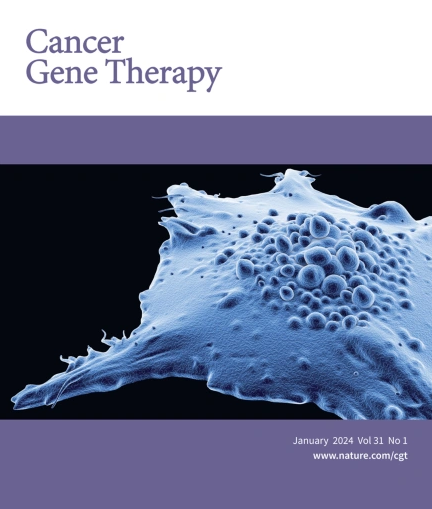AMIGO2 enhances the invasive potential of colorectal cancer by inducing EMT
IF 4.8
3区 医学
Q1 BIOTECHNOLOGY & APPLIED MICROBIOLOGY
引用次数: 0
Abstract
In our previous studies, we identified amphoterin-inducible gene and open reading frame 2 (AMIGO2) as a driver gene for liver metastasis and found that AMIGO2 expression in cancer cells worsens the prognosis of patients with colorectal cancer (CRC). Epithelial–mesenchymal transition (EMT) is a trigger for CRC to acquire a malignant phenotype, such as invasive potential, leading to metastasis. However, the role of AMIGO2 expression in the invasive potential of CRC cells remains unclear. Thus, this study aimed to examine AMIGO2 expression and elucidate the mechanisms by which it induces EMT and promotes CRC invasion. Activation of the TGFβ/Smad signaling pathway was found involved in AMIGO2-induced EMT, and treatment with the TGFβ receptor inhibitor LY2109761 suppressed AMIGO2-induced EMT. Studies using CRC samples showed that AMIGO2 expression was highly upregulated in the invasive front, where AMIGO2 expression was localized to the nucleus and associated with EMT marker expression. These results suggest that the nuclear translocation of AMIGO2 induces EMT to promote CRC invasion by activating the TGFβ/Smad signaling pathway. Thus, AMIGO2 is an attractive therapeutic target for inhibiting EMT and metastatic CRC progression.

AMIGO2 通过诱导 EMT 增强结直肠癌的侵袭潜力。
在之前的研究中,我们发现两性霉素诱导基因和开放阅读框2(AMIGO2)是肝转移的驱动基因,并发现AMIGO2在癌细胞中的表达会恶化结直肠癌(CRC)患者的预后。上皮-间质转化(EMT)是引发 CRC 获得恶性表型(如侵袭性潜能)并导致转移的诱因。然而,AMIGO2的表达在CRC细胞侵袭潜能中的作用仍不清楚。因此,本研究旨在检测AMIGO2的表达,并阐明其诱导EMT和促进CRC侵袭的机制。研究发现TGFβ/Smad信号通路的激活参与了AMIGO2诱导的EMT,而TGFβ受体抑制剂LY2109761能抑制AMIGO2诱导的EMT。使用 CRC 样本进行的研究表明,AMIGO2 的表达在侵袭前沿高度上调,AMIGO2 的表达定位于细胞核,并与 EMT 标记表达相关。这些结果表明,AMIGO2的核转位通过激活TGFβ/Smad信号通路诱导EMT,从而促进CRC的侵袭。因此,AMIGO2 是抑制 EMT 和转移性 CRC 进展的一个有吸引力的治疗靶点。
本文章由计算机程序翻译,如有差异,请以英文原文为准。
求助全文
约1分钟内获得全文
求助全文
来源期刊

Cancer gene therapy
医学-生物工程与应用微生物
CiteScore
10.20
自引率
0.00%
发文量
150
审稿时长
4-8 weeks
期刊介绍:
Cancer Gene Therapy is the essential gene and cellular therapy resource for cancer researchers and clinicians, keeping readers up to date with the latest developments in gene and cellular therapies for cancer. The journal publishes original laboratory and clinical research papers, case reports and review articles. Publication topics include RNAi approaches, drug resistance, hematopoietic progenitor cell gene transfer, cancer stem cells, cellular therapies, homologous recombination, ribozyme technology, antisense technology, tumor immunotherapy and tumor suppressors, translational research, cancer therapy, gene delivery systems (viral and non-viral), anti-gene therapy (antisense, siRNA & ribozymes), apoptosis; mechanisms and therapies, vaccine development, immunology and immunotherapy, DNA synthesis and repair.
Cancer Gene Therapy publishes the results of laboratory investigations, preclinical studies, and clinical trials in the field of gene transfer/gene therapy and cellular therapies as applied to cancer research. Types of articles published include original research articles; case reports; brief communications; review articles in the main fields of drug resistance/sensitivity, gene therapy, cellular therapy, tumor suppressor and anti-oncogene therapy, cytokine/tumor immunotherapy, etc.; industry perspectives; and letters to the editor.
 求助内容:
求助内容: 应助结果提醒方式:
应助结果提醒方式:


